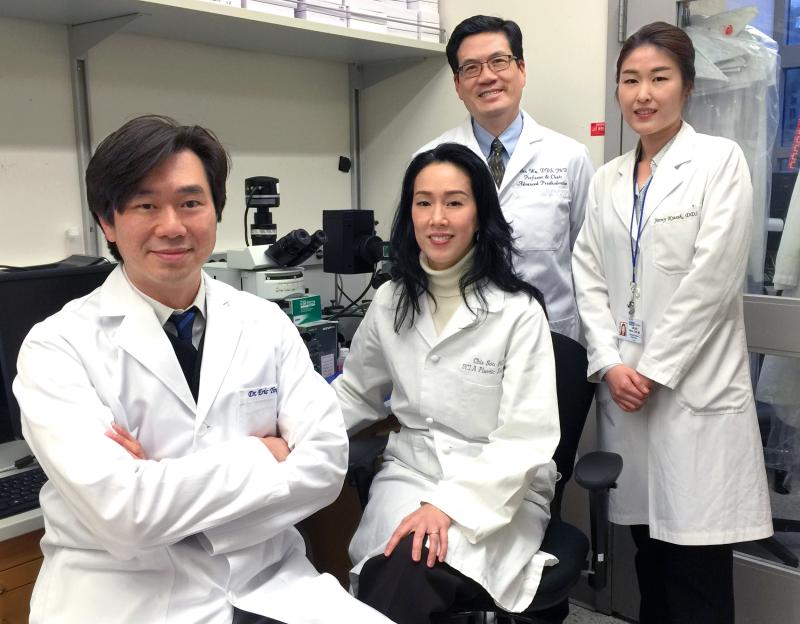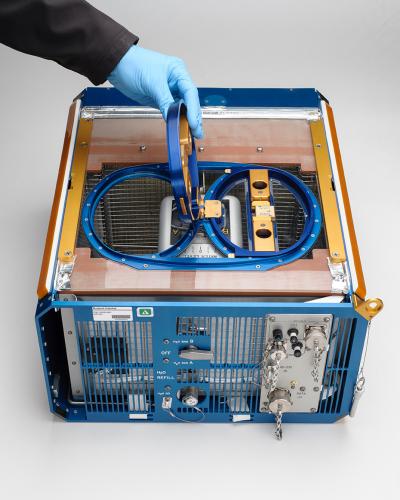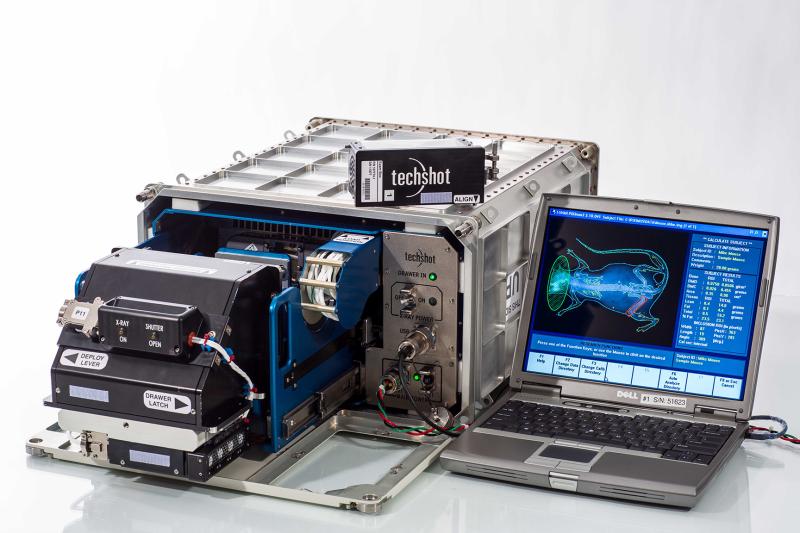Chia Soo, M.D., will never forget the day the mice came back to Earth.
After four and a half weeks on the International Space Station (ISS), half of her research team’s 40 mice—part of a study on a new compound to preserve bone density—hitched a ride back on a SpaceX capsule in what was the first-ever “live return” of mice. First they splashed down in the Pacific Ocean, where SpaceX workers picked them up and carried them to the Long Beach Pier. There they were met by a team from NASA’s Ames Research Center, which placed the mice’s container on a FedEx truck that drove them to the University of California, Los Angeles (UCLA).
There, Soo, her team and a group of veterinarians waited nervously.
“We had no idea if we would find mush inside or what,” Soo, a plastic surgeon and scientist at the University of California, Los Angeles, recalled to Fierce Biotech Research. Then they opened the capsule.
“It was like, ‘Oh my gosh, they’re healthy! They’re moving around!’” she said. “Everybody was cheering. It was like Christmas, all the Christmases rolled into one.”
The labs behind the study, which was co-led by scientists at the Forsyth Institute, are working on a paper that describes the return process. But first, they have another success to share: Their compound, BP-NELL-PEG, appeared to protect the mice from the rapid bone loss that plagues astronauts. The findings were published Sept. 18 in npj Microgravity.
“What they’re addressing is really important to long-term spaceflight,” Steven Boyd, Ph.D., a University of Calgary biomedical engineer who leads the Canadian Space Agency’s TBone studies on astronaut bone health but was not involved with the study, told Fierce Biotech Research. “We need to find solutions to mitigate bone loss in microgravity, and treatments like this may be an important part of the answer.”
Dem (space) bones
Astronauts in space lose bone at a rate of about 1% per month on average—12 times the rate of people on Earth, who lose around half a percent a year after age 15, Soo said. The speed varies with age, especially for women. Some of the ISS crew members in the TBone study lost about 20 years’ worth of bone in just six months.
“That’s a very rapid bone change for people who are in their 40s, which is roughly the average age of an astronaut,” Boyd said.

Why does this happen, exactly? Gravity’s weight on bones stimulates cells to constantly remodel and repair tissue by balancing formation and absorption. In microgravity, the lack of weight, or mechanical loading, disrupts this balance so that absorption is greater than formation, leading to bone loss.
“When we walk around, we’re ‘loading’ our bones, and that’s super important to maintaining healthy bones,” Boyd explained. “In space, you can’t maintain your bone mass—your body adapts to the fact that it doesn’t need as strong of a bone anymore, because you don’t walk or pick up clothes, and so on.”
While some of that bone may come back, not all of it does. The TBone study found that even after a year, the astronauts still hadn’t regained all the bone density they lost. And where they did regain bone, its microstructure—the way the many tiny rods connect throughout its spongelike architecture—wasn’t the same as before, Boyd said.
“So when you come back to Earth, and somebody says, ‘Oh, you've lost, you know, 8% bone density, the structure has actually changed as well,’” he explained. “[The bone that builds back] builds on top of the existing structure … the underlying structure may be permanently altered.”
It’s not yet clear whether the permanent changes seen in the TBone study also compromise their strength. Even if the new structure is different, the bone that does recover might compensate for the differences the researchers saw, Boyd noted.
Still, studies like TBone demonstrate a clear need for a way to prevent bone loss beyond what space programs are already doing, which includes hourslong exercise regimes on the ISS and the use of osteoporosis drugs like bisphosphonates. Though vital for astronauts’ physical and mental health, exercise could easily be hampered by an injury. Meanwhile, bisphosphonates’ potential adverse effects, like nausea and heartburn, are hard enough to tolerate on Earth—much less in space.
“When you combine an anti-osteoporosis drug with exercise, you’re actually getting closer to preventing [bone loss] from happening,” Boyd said.
NELL-1: A space odyssey
That’s where the UCLA and Forsyth researchers’ drug, BP-NELL-PEG, could come in. At the heart of the compound is NELL-like molecule-1, or NELL-1, discovered by Forsyth’s Kang Ting. Ting’s lab had previously shown that NELL-1 is critical for bone development and enhances bone regeneration by activating pathways that increase bone cell formation and inhibit reabsorption. These qualities, at least in theory, make it ideal for protecting against bone loss in space.
But, before they could test it out, the researchers needed to overcome a couple delivery hurdles, including cutting injections down from once every two days to every two weeks. They also had to figure out how to ensure the drug went to its target, bone, and not all over the body.

To make things easier on the astronauts, they also changed the route of administration from tail vein injections to administering it into the abdominal, or peritoneal, cavity.
“That was much easier for the astronauts to do than to try to catheterize a tiny mouse tail vein,” she said. “As you can imagine, when everything’s floating around in microgravity, trying to find such a little thing would have been very difficult.”
In addition to the 40 mice aboard the ISS, the researchers had another 40 at the NASA Kennedy Space Center as “ground controls.” To match the 20 mice that were on the live return, 20 of the ground controls traveled from Kennedy to UCLA on the day they came back, arriving at nearly the same time. In all groups, half the mice were treated with BP-NELL-PEG, while the other half received a control solution.
The researchers kept track of the mice’s bone density with regular measurements inside a DEXA scanner, including one aboard the ISS—which necessitated the development of sticky pads to keep the mice from floating around. They also took 3D images of their bone structure using microcomputed tomography, or microCT. Astronaut bone studies, including the TBone project run by Boyd, use the same kinds of tools to assess density and structure.
BP-NELL-PEG protected the space-faring mice on both fronts. On average, treated animals on the ISS actually gained about 15% density above baseline at the nine-week mark in the lumbar spine, while untreated animals lost around the same amount by the end of the period, according to the paper. Similar results were seen at the tibia: At nine weeks, treated mice had gained around 3% to 4% density, while the untreated mice lost about 7% to 8%.

And, while both groups lost density in the femur, on average, the percentage lost by the end of the study was slightly lower for treated mice than for untreated mice. The structure of the femur, analyzed using microCT, suggested a benefit as well: There was a marked difference in the number of trabeculae—the porous material that makes up bone—between of the treated and untreated flight groups. The same was true for the tibiae and lumbar vertebrae.
A closer look at the cells in the mice’s bones told the same story: They held signs of growth, such as markers associated with osteoblast formation.
“This implies BP-NELL-PEG treatment can promote bone turnover in favor of overall bone formation,” the researchers wrote in their paper. “Preservation of both osteoblast and osteoclast functions is significant because it suggests bone remodeling remains active.”
This is an important distinction from therapy with bisphosphonate drugs, the scientists added. Those remedy osteoporosis by stopping bone turnover; while this is effective in preventing further density loss, there is evidence that it can also reduce bone quality and ultimately increase the risk of fracture.
Looking ahead
This mouse study is more applicable to astronauts than previous ones because the mice stayed in microgravity much longer than animals in previous studies, an especially important consideration as space companies consider long-duration flights to places like Mars.
There are inherent limitations that come with doing studies on the ISS. For one, there just isn’t enough space to test large numbers of research animals at once—and every ounce of weight, right down to syringes, adds to the cost. Even if that weren’t a factor, the experiments would still be limited to fewer animals than might be used on Earth, because astronauts have so little time to devote to any one experiment.
“It would have been much nicer to have a cohort of maybe 80 or 120 animals,” Soo said. “Then you could have more data and statistics.”
And, of course, the old adage remains true: Mice are not men.
“Showing things in a mouse model, while being very important and informative, is still a long way from demonstrating in humans,” Boyd said. “But I think it’s a very promising approach.”
Soo’s team has already followed up with some studies on larger animals. They’ll also soon know how well the live return mice recovered once they arrived back on Earth, where they continued therapy with BP-NELL-PEG.
Ultimately, Soo sees an application for the drug Earthside in patients who are at risk for premature bone loss. She and Ting previously founded a biotech called Bone Biologics to find clinical applications of NELL-1. Though they’re no longer involved with the company, it is in the process of launching studies of the drug in humans.
“Hopefully, we can find better, safer ways to grow and restore bone,” Soo said. “The goal is to improve musculoskeletal health. Being able to walk and move around is one of the fundamental activities of daily living, and being able to live healthy and happily.”
Editor's Note: This article has been updated to clarify how microgravity impacts bone.